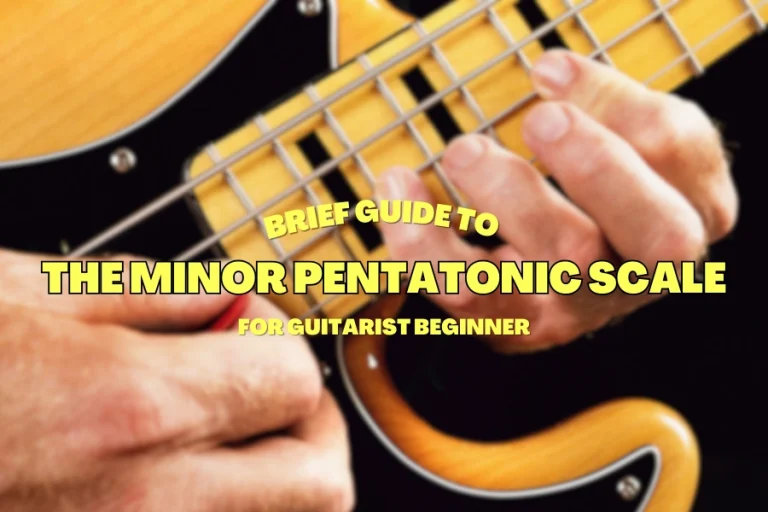
If you are a person who often listens to Western music, you will be very familiar with the major scale notes in each melody of the songs that artists often perform with guitars on stage. But can you fully understand it?
To be able to play good at the guitar, you need to know and understand the Major Scale, because this is an important part to learn when starting to play it. Only once you have mastered the knowledge will you also be able to explore different aspects of guitar literature and become a better player. In the article, we’ll tell you about the special meaning behind a major scale guitar and how you can use it in your music.
What is a Major Scale on Guitar?
A scale is an ordered sequence of musical pitches, typically arranged from low to high or vice versa. A major scale guitar is seven notes – eight if you count the higher version of the first note to complete the octave. On the other hand, the major scale is also made up of a series of whole steps (W) and half steps (H). A whole step on the guitar is the distance of two frets, and a half step is the distance of one fret. This is the order of both whole steps and semitones that make up the major scale.

How to Playing the Major Scale on Guitar
Compared to other minor scales or blues scales, playing major scales always causes more trouble when you first play. However, once you master minor scales, it will give you more options when soloing the perfect guitar version of the song. So, we will share with you some ways to play major scales guitar that you can learn and practice on your guitar:
Notes on A Major Scale Guitar
It is made from seven notes: A, B, C#, D, E, F#, and G#.
The first note- A (root note) of the scale. In case, you are building an A major chord, you can combine the A root with the third C# major and the perfect E. Additionally, you can play the major scale in many different positions on the guitar neck. The A will contain seven equivalent notes no matter where you start.
After we have clearly outlined the notes on the guitar, we can practice placing our fingers on the keys to play the A.
A Major Scale Guitar Positions
The major scale guitar diagram is a valuable learning aid for guitarists, visually demonstrating where to place your fingers on the fretboard to play the scale. Each dot on the diagram represents being played on a specific fret and string. A dot with notes above the string indicates that you should play that string without pressing any frets.

A Major Scale – Open Position
Let’s explore how to play in the open position
To play the scale in an open position:
- Use your index finger for notes on the 1st fret
- Use your middle finger for notes on the 2nd fret
- Use your ring finger for notes on the 3rd fret
- Your pinky finger notes on the 4th fret
This fingering allows you to cover all the notes of a major scale in the lower position of the guitar fretboard.
You can also play in the 4th position, moving your hand up the neck so that your index finger is rest. Start the scale with your middle finger on the 5th fret of the low E string, use your ring finger to note the 6th fret and your pinky to play the notes on the 7th fret. This position, allows you to use skillful playing at a higher pitch on the guitar neck.
A Major Scale Tabs
We’ll together explore guitar tablature (tabs). Tabs provide a sequential representation of notes, indicating the order in which they will be played.
It’s worth noting that guitar players often have a personal preference between diagrams and tabs, there is no right or wrong choice. Both open position and 4th position are widely used in guitar music theory and reading proficiency will expand your learning opportunities as you progress on your guitar journey.
Now, let’s check out the tabs we’ve studied in both positions, giving you a new perspective on the same musical information.

The shapes in a major scale guitar
More experienced guitarists often use a system of five distinct shapes or forms. These forms provide a more compact and efficient way to navigate the major scale, similar to how the pentatonic scales are commonly approached but the five forms it offers offer greater flexibility. This approach contrasts with the initial linear study of the scale and proves more practical in real-world playing situations.

Bottom Line
Unlocking a major scale guitar is like discovering a new language on your guitar. As you absorb its patterns and nuances, your musical vocabulary will expand exponentially. Regular practice will not only improve your technical skills but also deepen your understanding of harmony and melody, making it easier for you to become a professional guitar player.
FAQs
Please, Listen for notes that sound like “home” or resolve tension in the music. This may be the root note of the key’s major scale. Also, look for sharps or flats in the key notation if reading music.
Twinkle, Twinkle, Little Star
Happy Birthday to You
Mary Had a Little Lamb
Hot Cross Buns
The CAGED system is a method of visualizing the keyboard using five basic open chord shapes (C, A, G, E, D) to play major scales and chords in any of the entire keyboard.









